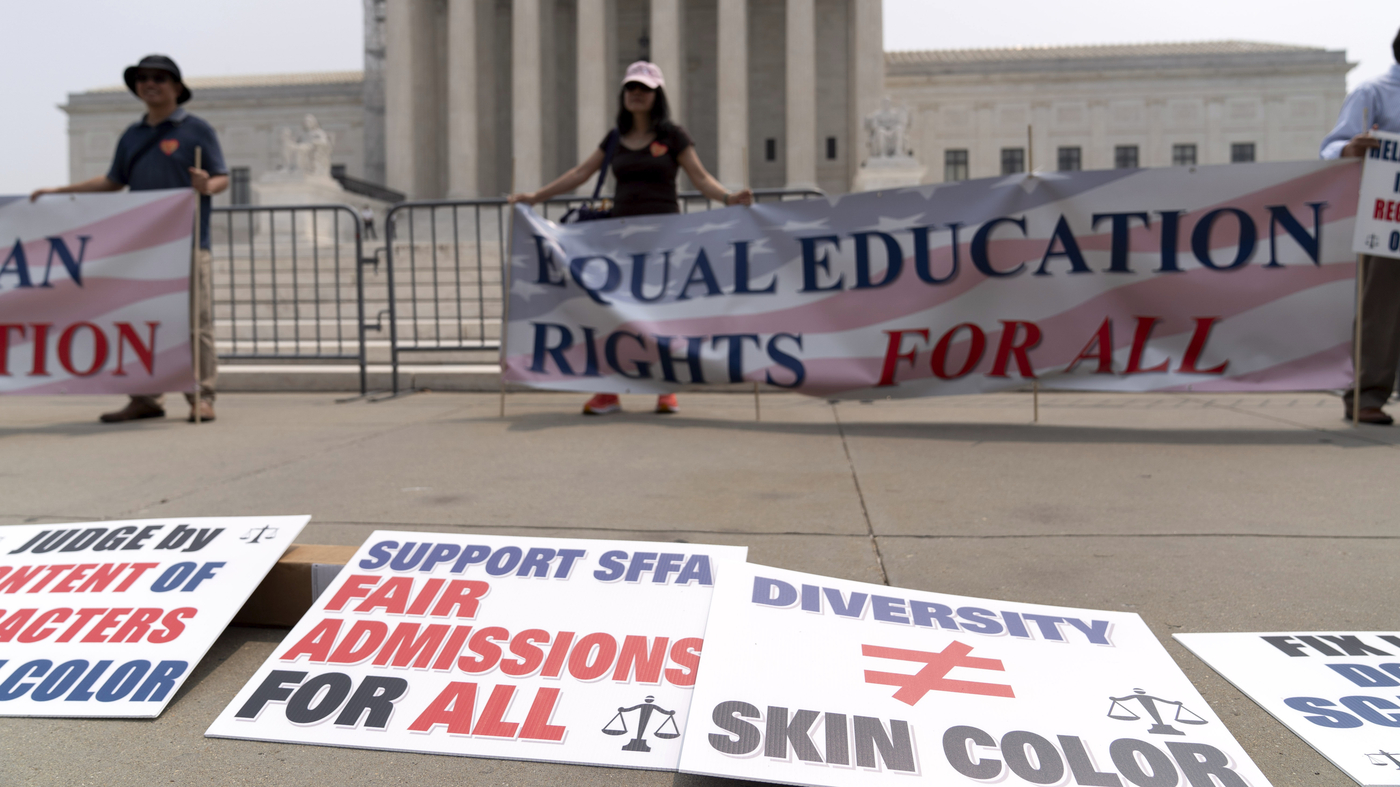
People protest outside of the Supreme Court in Washington, D.C., Thursday. The Supreme Court on Thursday struck down affirmative action in college admissions, declaring race cannot be a factor and forcing institutions of higher education to look for new ways to achieve diverse student bodies.
Jose Luis Magana/AP
In 2015 Edward Blum, the conservative activist behind the push to end affirmative action, stood in front of a group of a dozen or so mostly Chinese Americans in a conference room in Houston.
He was introduced by the Houston Chinese Alliance’s David Cao, who prefaced Blum’s presentation with a quote from George Orwell’s novella Animal Farm.
“All animals are equal, but some animals are more equal than others,” Cao said, to a smattering of laughter.
“In admission to the American elite universities, it is no secret that Asians are less equal.”
But Blum was trying to change that, Cao told the group.
Blum is not a lawyer but according to the American Civil Liberties Union, he has a “long history of crafting legal attacks on civil rights.”
He helped orchestrate Shelby County V. Holder, the supreme court ruling that rolled back voting rights, making it harder for ethnic minorities to vote. And he’s been laser focused on eliminating the use of race and ethnicity in college admissions.
Blum had first cast two white women, most notably Abigail Fisher, to craft lawsuits intended to end affirmative action. Fisher claimed she didn’t get into the University of Texas, Austin because of the color of her skin. Affirmative action, the argument went, was racist against white people. Fisher was an innocent victim unfairly losing out to people of color.

Read the full article here

Leave a Reply